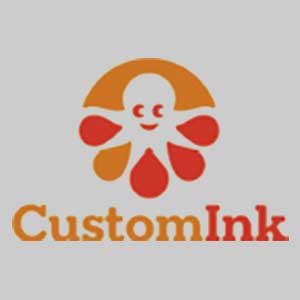Product Hub July 14, 2015
How To Combat Falling Apparel Margins
With margins squeezed and online options expanding, how can distributors stay profitable selling apparel? By focusing on something other than just sales
With margins squeezed and online options expanding, how can distributors stay profitable selling apparel? By focusing on something other than just sales
For Robin King, sometimes the battle just doesn’t seem worth it. In Batesville, AR, a town of only 11,000 people, there are a disproportionate number of T-shirt vendors. And though the three shops in addition to King’s certainly aren’t bitter rivals, she says, the minimal profits on wearables makes the challenge to win certain clients “not worth fighting over.”
Between one competitor – a personal friend – and another nonprofit vendor that practically gives away T-shirts thanks to a volunteer workforce, King has decided to mostly put her energy elsewhere. “We sell some golf shirts for special promotions, but in small quantities,” says King, owner of Schwegman Office Products/Independent Stationers (asi/522442).
King might take comfort knowing she’s not alone. Distributors nationwide complain with greater frequency that margins on apparel orders are tighter and tighter every year, making some wonder if the staple of the promotional product marketplace – the ubiquitous T-shirt – is worth its value in business.
Web Threats
Part of the issue, distributors say, is an increasing apparel onslaught from Web-based retailers who are offering quality name-brand tees for reasonable prices. The Internet firms sell direct and, by doing so, potentially force distributors to cut prices to remain competitive.
Take one example: CustomInk. The DIY T-shirt provider is trying to simplify apparel sales by having customers design items right on the company’s website.
CustomInk also floods TV airwaves with ads. In what almost feels like a campaign pitch against traditional distributors, CustomInk CEO Mark Katz insists that his products are not only reasonably priced and easy to order, but “have this incredible power to bring people together.”
In a marketplace of increased competition and tougher margins, retailers like CustomInk and Vistaprint would seem to be muscling in on precious business. (Both firms declined to be interviewed for this article.) Many distributors explain that they’re not competing against those businesses that have a strong presence online. But what many are really saying – without realizing it – is that they’ve already ceded one-offs and small orders to online companies. And that may be the first step to widespread encroachment.
Local Leverage
Yet, oddly enough, many distributors say firms like CustomInk are doing them a service. Their mainstream ads are helping apparel sellers by shining a spotlight on promotional T-shirts. Plus, these Internet firms wind up targeting a very specific niche of the marketplace. That leaves distributors a clear idea where they can better focus their sales and marketing efforts in the corporate arena.
“I think CustomInk is the greatest thing that ever happened to the business.”
Rich Rosenthal, Super TShirts.
“I think CustomInk is the greatest thing that ever happened to the business,” says Rich Rosenthal, president and COO of Super TShirts (asi/570684), a distributor based in Ft. Myers, FL. “They bring awareness to the industry.”
A customer recently walked into Rosenthal’s shop with a design printed out from CustomInk’s website. He wanted to know if it could be done in a larger quantity and what the cost would be, in part because the online vendor’s prices were substantial. Apart from cost, Rosenthal says some customers would “rather do it local” and “see it up close and personal,” rather than view their product online without the chance to feel fabric before placing an order.
That’s particularly true for large corporate clients, experts say. Moreover, “CustomInk isn’t cheap,” Rosenthal says. With the belief that CustomInk and others like them target the “stay-at-home mom or girl scout leader that wants to do eight T-shirts for a retreat,” many distributors say they’re not worried – yet – about infringement from Web-based apparel vendors.
“I don’t think they’ll be a threat anytime soon because online companies are curtailed to that type of market, and it doesn’t affect the rest of us very much,” says Jessica Johnson, promotional consultant with Production Creek Specialty Advertising (asi/299743), based in Lincoln, NE.
That said, Johnson admits, “If I was a business that really needed those smaller orders just to keep me going, then, yes, I could see where that probably is going to be a problem. It depends on who your market is.”
The Right Clients
Because of online merchants’ common claim to one-off orders, many distributors are using a different tact to boost margins – carefully choosing clients that provide bigger returns. Instead of competing on declining T-shirt or wearables prices, they’re focused on two types of opportunities: larger or corporate-type orders and smaller orders filled with higher end, pricier products.
In fact, distributors tout customer and order size selection as one of the most effective ways to maintain healthy margins on apparel orders. “I don’t hesitate to do small orders, because the margins are so good,” says Belinda Gist, president of Red Truck Promos (asi/529185), based in Arlington, TX. “A typical order for us is between 12 and 48 embroidered performance polo shirts, very frequently a mid- or higher-range shirt,” she says. That “sweet spot” comes from targeting small businesses where Gist and her team “can deal directly with the owner or decision maker in the office,” who is often also willing to refer Red Truck to colleagues.
In 40 years, Ed Buxton isn’t sure he’s ever had to lower prices. To keep margins healthy, the vice president of Forever Young Sportswear (asi/322524), based in Marathon, FL, targets firms and industries that tend to produce more loyal clients, like government-based groups and large corporate customers. “It’s a different niche than the average person who wants 10 shirts and wants them for $3,” says Buxton, who dreads that type of client and the minimal margins they bring in.
Keying in on large clients with deep pockets and a willingness to reorder is certainly one way to boost margins. But so is knowing your client and leveraging insider information for bigger profits, says Marty McDonald, president and CEO of McDonald Imaging Solutions Inc. (asi/522770), a distributorship based in West Des Moines, IA. Recently, McDonald walked into a local bank and noticed a slew of college grads serving as bank tellers, all dressed in cotton shirts. Though the shirts were a low-cost buy for the bank (bought online, McDonald thinks), they wouldn’t prove profitable over time, McDonald figured, and he approached bank execs to explain.
“Here’s the thing about college kids,” he said to bank reps. “They might wear a T-shirt out, then throw it in the corner of their room when they get home, then wear it to work again… It looks like they slept in it.” And, no one would argue, that’s a poor employee image for a bank to project.
“There’s still value in the person-to-person touch and good customer service.”
Belinda Gist, Red Truck Promos
As an alternative, Buxton came armed with a performance fabric shirt that could be wadded up and still look pressed. “I rolled it in a ball and pulled it out and it looks perfectly fine,” Buxton says. The bank ultimately opted for it, giving him an $8 profit per shirt.
Service Smarts
Distributors should keep in mind that inflated prices and profits come from working with clients (whether large corporate ones or small mom-and-pops) who are willing to pay more for a trusted relationship and service offering. Not surprisingly, those types of clients are also keen to have more attention paid to their orders – something online vendors are less prone to do.
“The people we work with usually appreciate having their hands held a bit during the process, and you give that up when you do things online,” Johnson says. Johnson and others believe that online firms also don’t offer the breadth of embellishments or design sophistication that distributors can broker for clients. Specialty inks, “glitter, vinyl, placements” and other decorating offerings from industry designers are a benefit not seen in the retail online world of apparel sales, distributors say. And that gives ad specialty firms an advantage, as well as another opportunity to boost margins, since those add-ons can drive up the final price as well.
In addition, partnering with one or two decorators helps too, experts say. By funneling a majority of orders to a couple of vendors, distributors can often negotiate volume discounts in decorating, cutting costs and boosting their margins in the process. In fact, brokering better margins often occurs behind the scenes.
When a supplier offers a special on shirts, for example, distributors don’t always pass the savings along to a client. For his part, Buxton says, if a supplier offers a $24 shirt for $18, he may pass along part of the savings to clients to entice them to buy. But it’s not necessary to share the entire cost reduction, he says.
“You can pass on a few dollars in savings and increase your margin at the same time,” he says. The same holds true for shipping charges, he adds. “A lot of suppliers have free shipping,” Buxton says. “We don’t have to pass that on.” Ultimately, distributors say, savvy sellers can keep apparel prices high enough to be profitable by offering a better level of service and detail. Stressing to clients that they’re “selling projects, not products” is often the key to sustaining healthy margins.
“If you break it down, there’s got to be 150 steps involved in the sequences and the way things have to happen in order for blank goods to be printed goods to get to their shipping destination,” says Cary Weinstein, president of LogoPro, based in Coupeville, WA. “We as distributors don’t produce anything,” says Weinstein, whose apparel margins average 37%. “But what we do provide is the service, and we charge for the service of getting it right and where it’s supposed to be when it’s supposed to be.”
Online Competitors

CustomInk Founded 15 years ago by college roommates, CustomInk now produces annual sales of more than $200 million. It sells 20 million custom T-shirts a year through its website and in 2013 raised $40 million in funding. www.customink.com

Vistaprint Now based in the Netherlands, Vistaprint was founded in 1995 in Paris. Using mass printing technologies, the company focuses on consumers and small businesses. The firm’s parent, Cimpress, recently reported its quarterly global revenues increased 19% to $340 million. www.vistaprint.com

CafePress Besides T-shirts, CafePress sells several other categories of promotional products online, including bags, mugs and calendars. The firm went public in 2012, with its stock debuting at $19 per share on the NASDAQ exchange. Its Q1 2015 revenues were $27.4 million, an 11% year-over-year decline. www.cafepress.com
The Personal Touch
In fact, being service rather than product purveyors is the single greatest competitive advantage most distributors think they have over online competitors – something that allows them to hold pricing and profits steady.
“There’s still value in the person-to-person touch and good customer service,” says Gist. And despite the seeming ease of ordering online, most corporate clients don’t have the time to spend on even the most user-friendly websites, Gist and others say. “Most of us have very short attention spans,” Gist says, and clients “don’t have the art right or aren’t sure of the colors.”
“Many of our clients come in and have an idea,” she says, but not a lot of interest in developing or executing it detail by detail. Instead, they want to delegate the work to an expert so that “they don’t have to think about it anymore.”
Distributors who thrive on creativity and execution insist they have loyal clients and a booming business with consistently high margins. “The last order I wrote today I can’t produce” for another month, says Rosenthal. Companies are rarely enticed by online price games and are willing to pay much more if the service is good, Rosenthal says. “They’re staying with you come hell or high water.” Plus, that makes raising prices and earning profits in the future easier, Rosenthal says.
I’ve got a sufficient backlog, so I’m not discounting.”
–Email: betsycummings@gmail.com

Product Hub
Find the latest in quality products, must-know trends and fresh ideas for upcoming end-buyer campaigns.
